How To Make Money On YouTube In 2024: 12 Proven Tactics
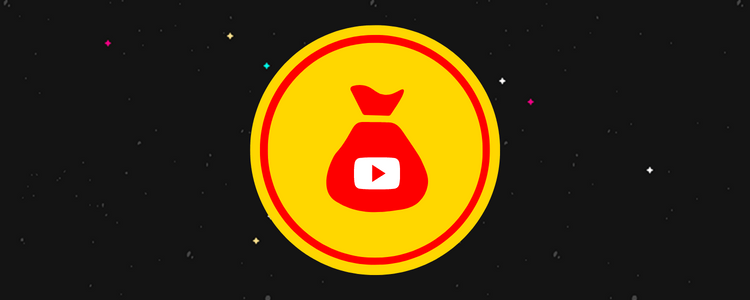
Wondering how to make money on YouTube?
YouTube ads and revenue generated from YouTube Premium subscribers are among the most popular ways to generate revenue on the platform, but there are plenty of other monetization tactics you can use.
Some even allow you to generate revenue independently from YouTube so you don’t need to worry about getting demonetized from a Community Guidelines strike.
In this post, we share several monetization strategies you can use to start earning money on YouTube or generate even more revenue.
1. Join the YouTube Partner Program
This is probably the most obvious tactic, but it’s still worth mentioning.
The YouTube Partner Program is the most effective way to earn passive income from your channel. It enables you to earn revenue when video ads play during your videos.
To join the Partner Program, you need at least 1,000 subscribers and 4,000 watch hours in the last 12 months.
You also need to live in a country or region where the program is available, have a linked AdSense account, have no Community Guidelines strikes, and follow all monetization policies.

Following “monetization policies” mostly means adhering to YouTube’s Community Guidelines and AdSense policies.
This means your content should be devoid of spam, hate speech and cyberbullying, safe for children, and free of harmful, dangerous and sexual activities.
Google’s AdSense policies prohibit the following content:
- Repetitive content where videos are so identical, viewers would have trouble distinguishing one video from another.
- Reused content. This is defined as using other people’s content in your videos without adding anything to it.
How to apply for the YouTube Partner Program
AdSense requires two-factor authentication, so make sure your YouTube account has this enabled before you apply for the Partner Program.
You can apply through YouTube.com from your computer’s web browser or through the YouTube Studio mobile app.
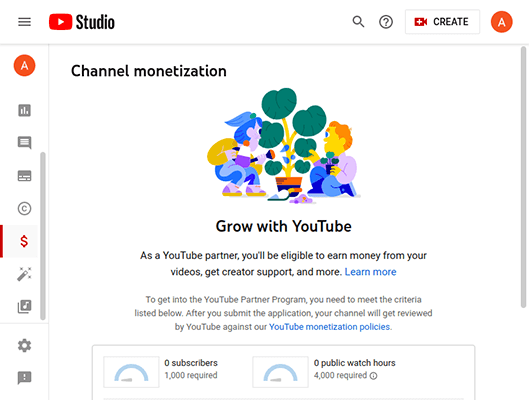
On a computer, click your profile picture, then YouTube Studio before finally opening the Monetization tab.
On the app, tap Monetize from the bottom menu.
Applying is easy from here:
- Accept the YouTube Partner Program’s terms and conditions.
- Connect an AdSense account to your YouTube channel.
- Wait for YouTube to review your application.
If you’re accepted into the program, you can turn on monetization and manage ad preferences immediately.
2. Use affiliate links in your videos
Affiliate marketing is one of the best monetization strategies for YouTube influencers, especially smaller channels who aren’t eligible for the YouTube Partner Program, yet.
Affiliate marketing allows you to earn revenue by promoting other businesses’ products and services.
You get your very own affiliate link for the product or service you promote. When a viewer clicks this link and makes a purchase, you receive a percentage of what they pay at no additional cost to them.
This is called a commission. Its amount will differ between affiliate programs but is typically between 10 and 30%. Some companies offer more than this, others less.
The greatest benefit of affiliate marketing for YouTube content creators is the ability to generate revenue independently from YouTube ads.
YouTubers often complain about “demonetization” on the platform.

When this happens, it means YouTube’s automated review system has detected a Community Guidelines violation in one of your videos and has subsequently demonetized it.
Because this review system is automated, it often detects false positives that aren’t always removed after further review.
Because you don’t receive ad revenue for demonetized videos, monetization strategies like affiliate marketing are critical for YouTube content creators.
They ensure you always receive revenue for your videos even when YouTube cuts it off.
How to get started with affiliate marketing
To get started with affiliate marketing, you need to join affiliate programs and generate affiliate links for the products and services you want to promote on your channel.
Start by considering products that appear frequently in your videos. Your YouTube audience is already familiar with them, so it’s only natural that you’d turn them into affiliate products.
For additional products, do a bit of research on your niche to see which products offer the best commissions.
You can then start placing affiliate links in your video descriptions.
Check out our post on affiliate networks to find programs you can promote.
3. Create sponsored content
This is another classic monetization strategy YouTube influencers often use to supplement a lack of ad revenue.
When you create sponsored content, brands pay to appear in your videos.
This usually means reserving a “sponsor spot” in every video. This is a 30-second to a minute-long showcase of your sponsor’s product and where your viewers can purchase it.
Some YouTubers create entire videos for sponsors’ products.
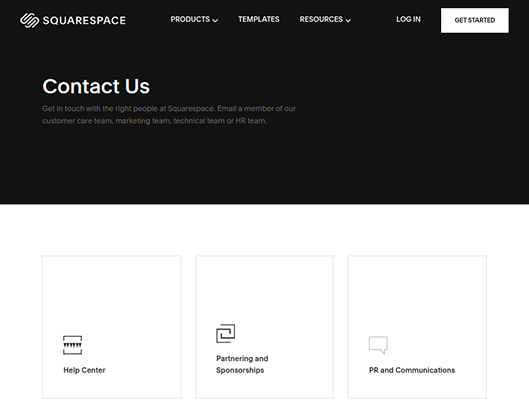
There’s no official rule on how many subscribers you need to get sponsored on YouTube. It all comes down to how you market yourself to potential sponsors.
However, the more subscribers you have, the more you can charge as sponsors will see a higher potential for return on investment.
How to get sponsored on YouTube
Sponsors will often approach YouTube influencers directly, but you can also seek them out yourself.
The latter option is especially good for video ideas you don’t have the funds for as some channels receive free products in place of payouts.
To open your channel to sponsorship inquiries, add a business email to the bio sections of every social media platform your brand has profiles on, especially YouTube, Instagram and TikTok.
You should also add it to the description of every video you publish.
As for how much you can make with sponsored content, many sources cite payouts between $10 and $50 per 1,000 views.
This translates to…
- $100 to $500 for a video with 10,000 views.
- $500 to $2,500 for a video with 50,000 views.
- $1,000 to $5,000 for a video with 100,000 views.
- $5,000 to $25,000 for a video with 500,000 views.
- $10,000 to $50,000 for a video with 1 million views.
The amount depends on your niche, how many subscribers you have and how many views you consistently receive across all of your videos.
Build a media kit you can send to potential sponsors during negotiations. This should be a multi-page PDF document outlining your channel statistics, audience demographics and brands you’ve previously worked with.
4. Use Patreon and other third-party subscription services
Many influencers make money on YouTube by offering exclusive content on third-party platforms in exchange for premium subscriptions.
One of the most popular platforms is Patreon. But there are plenty of alternatives such as OnlyFans and Substack.
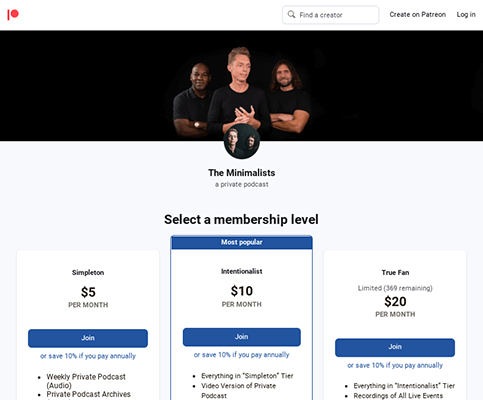
Subscriptions are available in tiers. The higher the tier you subscribe to, the more content and exclusive benefits you receive.
Many YouTubers offer a base tier on Patreon that grants subscribers early access to upcoming content.
Other tiers grant access to behind the scenes content, extended content, uncensored content, members-only Q&A sessions, bonus content and more.
5. Accept channel memberships
Channel memberships are YouTube’s answer to third-party subscription services like Patreon.
YouTubers that have memberships enabled have a Join button near the Subscribe button.

Subscriptions typically start at $4.99/month, but you can add more tiers with more perks.
YouTube, like Patreon, does take a cut of your subscriptions. They charge 30% of what your subscribers pay, so you’ll only receive $3.49/month for a $4.99/month subscription.
Here are common perks for channel memberships:
- Channel badges
- Channel-exclusive emojis
- Members-only livestreams
- Members-only live chat during livestreams
- Exclusive community posts
- Bonus content
It’s a great alternative to Patreon as paying viewers don’t need to leave YouTube to access the premium content they signed up for.
6. Create branded merch for your YouTube channel
Have you ever watched a YouTube video and noticed a few products underneath the description with the channel’s brand imprinted on them?
That’s branded merchandise, more commonly known as “merch.” It’s a simple way to give your viewers a way to support you without the commitment of a subscription.
Plus, they get something tangible in return, usually a hoodie or a t-shirt.
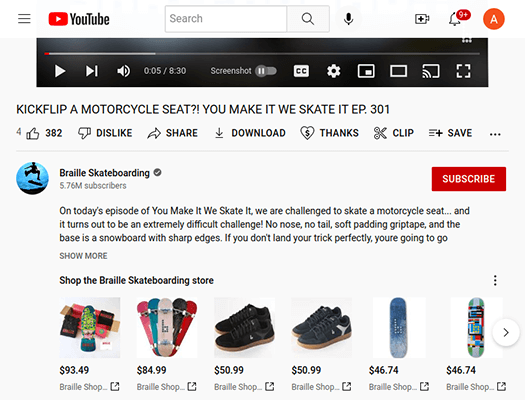
You can easily create graphics for your own merch in a tool like Canva if you’re not artistically inclined, or hire a graphic designer through Fiverr or Upwork.
While you can work with suppliers directly or ship merch from your own warehouse, most YouTubers, especially smaller creators, use print-on-demand services like Printful, Redbubble and Teespring.
You can even create an online store with platforms like Sellfy, Shopify, and WooCommerce, and connect it to a print-on-demand service.
Print-on-demand services are popular because they’re affordable and low maintenance.
Your supplier prints and processes orders for you, including returns.
Plus, you only pay for the products you sell when you receive an order, so you don’t need to worry about all of the upfront costs associated with buying and storing inventory yourself.

When you’re ready to start selling, you’ll generate revenue through profit margins.
If your print-on-demand service charges $13 for a t-shirt and you charge $24 for it, you’ll receive $11 every time a viewer buys one and your print-on-demand service will take the other $13 to cover the cost of product and service.
7. Stream on Twitch
If you host live events, consider streaming them on Twitch. You can even stream simultaneously from YouTube and Twitch to reap the benefits of both platforms.
While some influencers are simply “Twitch streamers,” meaning they don’t make YouTube videos or content on any other platform, many YouTube influencers publish videos to YouTube and host livestreams on Twitch.
Twitch gives a 55% cut of the ad revenue you generate on the platform.
And like YouTube, Twitch offers channel subscriptions for $4.99/month. Viewers receive emojis, badges, and access to subscriber-only live chat and VODs (video clips and full videos of past broadcasts).
Twitch takes a 50% cut of every subscription.
Streamers also generate revenue through live viewer donations.
Most streamers have donations linked to an application that reads donation messages out loud through a computerized voice.
This small perk incentivizes viewers to donate.
8. Host livestreams on YouTube
YouTube has two features similar to the live donation feature on Twitch.
They’re called Super Chats and Super Stickers. They enable viewers to interact with YouTubers during livestreams.
Super Chat messages appear in the live chat panel, except they’re pinned to the top and color coded so influencers can spot them easily.
Super Stickers are digital or animated images that appear in live chat.
Viewers can pay between $0.99 and $50 for Super Chats and Super Stickers. YouTube takes a 30% cut of each one.
They’re essentially donations, but because they give viewers better ways to interact with YouTubers during livestreams, they incentivize viewers to take action.
9. Create other types of products
Branded merch is the most obvious first step into creating products for most YouTubers.
Viewers are quite familiar with the practice, and it’s not at all unlike merch booths at concerts.
However, if your channel is doing well and you have the funds, you might consider branching out into other types of products.
Many YouTubers publish books, but you can also create dedicated products related to your niche.
For example, Simply Nailogical launched her own nail polish company called Holo Taco.
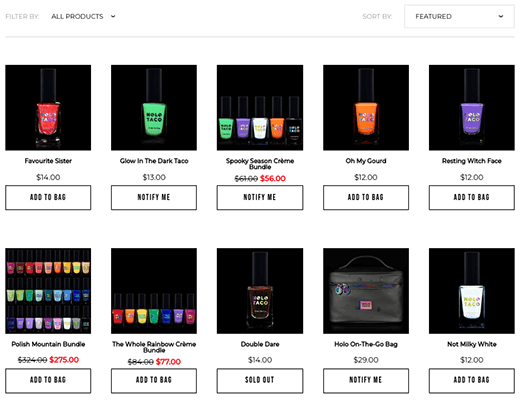
Linus Tech Tips has their own tech-optimized screwdriver, Braille Skateboarding now makes their own line of skateboards, and Mr. Beast has a chain of burger joints.
Viewers in your niche come to you for a reason.
Pinpoint what that reason is, and conduct deep research on your niche to discover where current products fail or fall short.
These are things a product of your own could solve, and if you pinpoint what your audience likes about you, you can put your own unique spin on any product you create.
10. Launch a crowdfunding campaign
Subscriptions available through YouTube channel memberships, Patreon, OnlyFans and Twitch are meant to fund the operation of your channel on an ongoing basis.
But what if you have a bigger project in mind with limited funds to see it through? That’s where crowdfunding through sites like Kickstarter, GoFundMe and Indiegogo comes into play.
These platforms have tiers like Patreon, except campaign backers pay “Pledges” on a one-time basis rather than monthly.
Pledges are similar to tiers on Patreon as each one must provide a new set of benefits to your backer.
Here are a few perks from Critical Role’s campaign to fund an animated version of a completed Dungeons & Dragons campaign. Pledges ranged from $20 to $25,000:
- Song.
- Ringtone.
- Art prints.
- Sticker sets.
- Playing cards set.
- Plushie.
- Dice set.
- Pin set.
- Messenger bag.
- Signed pilot script.
- Private screening.
- Associate producer credit.
- Personalized portrait by animation team.
- Studio tour.
- Lunch with the Critical Role cast.
- Executive producer credit.
- All-expense paid trip to Los Angeles.

11. Accept donations & tips
Some YouTubers accept tips and donations outside of a livestreaming environment.
Ko-fi is a popular platform for this. YouTubers insert a “buy me a coffee” prompt in their video descriptions, and viewers show their support in donation or tip increments of around $5 each.
Ko-fi does have memberships, but it gained popularity as a tipping platform.
It’s a simple way for a smaller video creator to earn money here and there without having to plan out more sophisticated monetization strategies.
12. License your content to third parties
Depending on the type of videos you create, you may be able to license them to the media or sell them on certain platforms.
For example, many storm chasers place a watermark on their videos and leave a “for media inquiries” email address in their video descriptions.
Newsflare, in particular, lets you license YouTube videos to media companies in an easy way.
They have a 50/50 license fee, but they’ll license your YouTube videos automatically by making copies of them and uploading them to their own YouTube channel.
Here’s the platform’s explanation on how this works:
“We’ll make a copy of your video on our YouTube channel and make an ‘ownership’ claim on your video through our account. You will receive a slightly scary sounding message from YouTube about copyright which you can ignore. The video still belongs to you, we just need to “claim” it (let YouTube know we’re using your video) so that we can start making money for you. The video will remain on your channel but you will start to see adverts around it.”
Content licensed through Newsflare has been used by The Weather Channel, The New York Times, BuzzFeed, The Daily Mail and The Dodo.
How to make money on YouTube more effectively
YouTube is a highly competitive platform as these statistics show.
So making money on it isn’t as simple as uploading videos and waiting for subscribers and ad revenue to pour in.
However, there are a few tweaks you can make to your YouTube strategy to optimize your monetization strategies.
For starters, you can ensure your videos are longer than 10 minutes.
Here’s a video TikTok creator @erikakullberg created where she explains how much different social media platforms have paid her.
For YouTube, she says:
“This short 29-second video got 1.8 million views and I made $3 from it. This long 12-minute video got 2.3 million views and YouTube paid me $35,000 for it.”
There are more factors that go into how much ad revenue a video generates, such as your niche and where your viewers are located, but this is a good example of how much watch time matters on YouTube.
Collaborating with other YouTubers
YouTube collabs are one of the quickest ways to get a new channel off the ground.
While you likely won’t get the attention of bigger YouTubers with millions of followers, you can reach out to other YouTubers in your niche that have slightly larger followings than yours.
Make better use of your YouTube video descriptions
Let’s be honest: a lot of viewers ignore video descriptions. Plus, viewers watching on smart TVs and devices and video game consoles won’t even see them.
Even so, many viewers do pop open that description panel on each of your videos, especially when you tell them to.
This is a great opportunity to generate revenue casually.
Here’s a simple video description template you can use:
- Description of the video’s content.
- Channel and social media links for any guests.
- Affiliate and sponsor links for any products discussed in the video.
- Other affiliate links you have, especially for products that appear frequently in your videos.
- A special discount viewers can use to save on merch. Name the discount code something cheeky like “ireadthevideodescription” to get their attention.
- Links and a brief explanation for any subscription services you use, such as Patreon.
- Links to your own social media accounts.
Final thoughts
Making money on YouTube isn’t easy.
Recording quality videos with engaging content on a consistent basis requires a lot of hustle, and it may be a long time before you start seeing a return on all of that investment.
However, there are plenty of monetization strategies you can use if ads alone aren’t doing it for you. And the popularity of the platform means there are more potential viewers for your channel.
The best strategies for smaller creators include affiliate marketing, creating branded merch, generating revenue through subscriptions from channel members or platforms like Patreon, and livestreaming on YouTube and Twitch.
These are tactics you can use even if you don’t qualify for the Partner Program, yet.
They require a lot more planning than simply uploading videos and placing ads on them, but they offer a quicker path toward monetization, even if you just launched your channel.
Along with the tips we mentioned in the previous section, here are a few more strategies you can use to make money on YouTube more effectively:
- Create videos consistently.
- Create engaging content.
- Create informative content.
- Prioritize audio quality over video quality if you’re working with limited funds for equipment upgrades.
- Create shortened versions of your YouTube videos, and upload them to TikTok, Facebook and Instagram as a way to advertise your channel.
Next, I’d recommend reading our post on How Much Money Do YouTubers Make? You’ll find some interesting insights & data.
And if you’re curious to learn more about YouTube or how to earn money from other platforms, you may find these articles useful:
- How Many YouTube Subscribers Do You Need To Make Money?
- 19 Top YouTube Channel Ideas You Can Use (+ Examples)
- 16 Proven YouTube Video Ideas To Boost Your Channel
- 50+ Best Side Hustle Ideas To Earn Extra Money
- How To Make Money On Twitch: 10 Proven Methods
- How To Make Money On Instagram
- How To Make Money On TikTok
- How To Make Money Gaming: 11 Proven Methods
